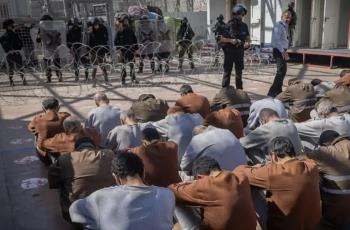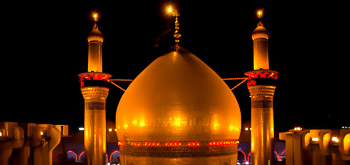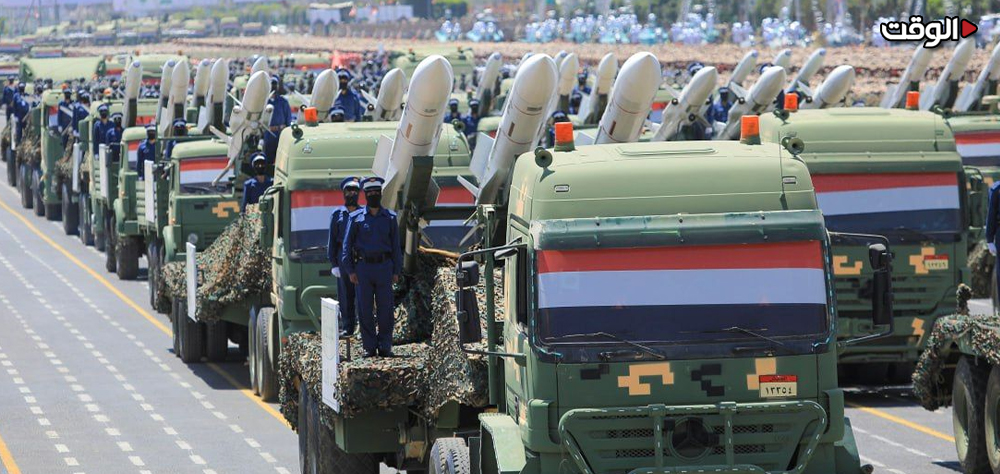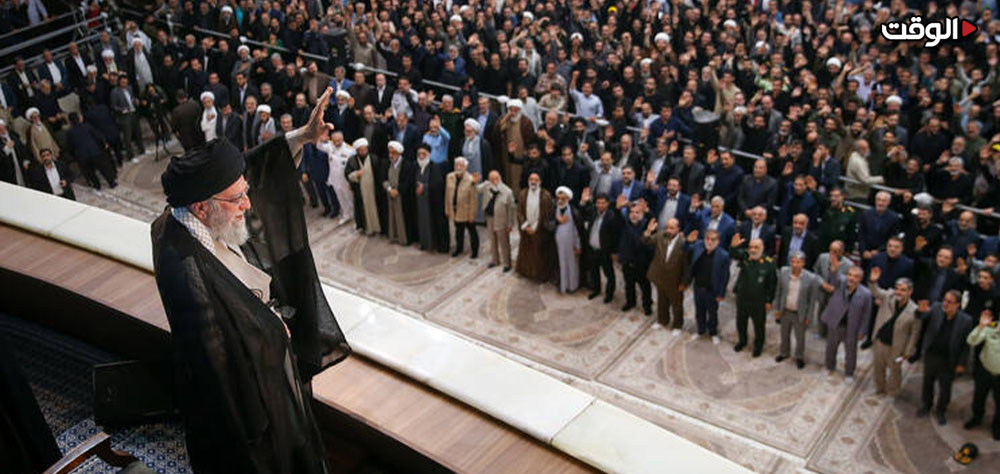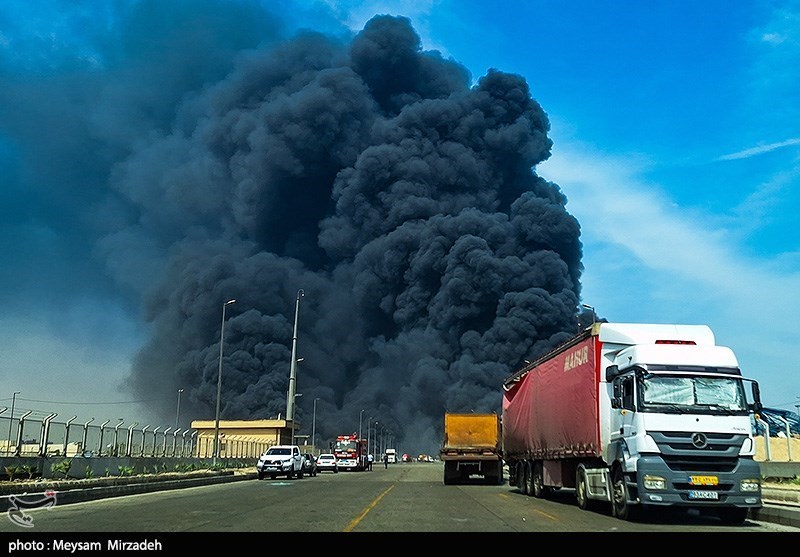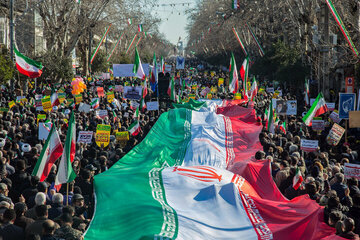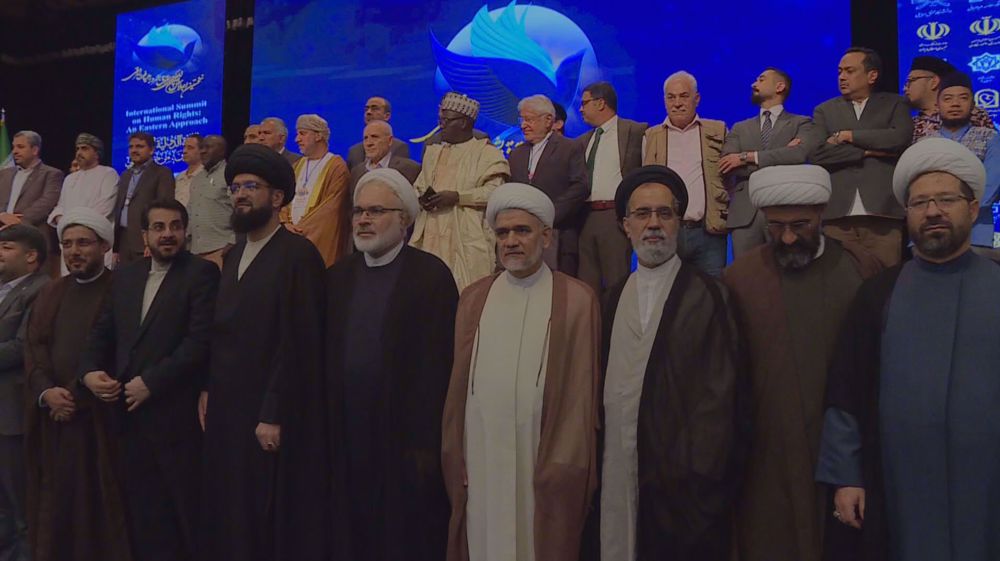Alwaght- While the US over the past two years has conducted hundreds of airstrikes on Yemen to destroy military infrastructure of Ansarullah resistance movement, it has not only failed to disrupt Sana'a's operations and ban against Israel in the Red Sea in solidarity with Gaza, but also has motivated Yemenis to enhance their military capabilities, especially their air defenses.
Since December 2023, in addition to shooting down 21 advanced American drones using air defenses, Ansarullah has managed to acquire new technologies to which even the highly advanced American fighter jets are not immune.
After an F-18 fighter jet was shot down by friendly fire following its maneuver to escape an Ansarullah missile, the second fighter jet of this type was neutralized in a different way recently.
In a rare incident, an F-18 fighter jet crashed into the Red Sea from the deck of the aircraft carrier USS Harry S. Truman on Monday. The fighter was being towed by a tug when it crashed, US officials told CNN. Fighter jets on ships are typically towed to where they are needed for any sort of flight or maintenance.
World astonished by Yemen's domestically-developed technology
While Yemen has been under most strict economic, military, and political blockade by the Saudi-led Arab coalition, emergence of an efficient air defense power operated by Ansarullah is something surprising to the military analysts. Relying on military self-sufficiency, foreign support, and reverse engineering, Ansarullah has managed to create a network of air defenses high-performing and threatening to the fighter jets and drones.
The Yemenis have been developing their air force capabilities in recent years, from ballistic missiles and cruise missiles to drones, including the movement's defense capabilities that have surprised the world.
Various reports indicate that Ansarallah has acquired advanced indigenous missiles such as "Thaqeb, Barq, Fatir and Hatem" with medium range that are capable of destroying targets at high altitudes.
Also, manufacturing electronic tracking equipment such as virtual radar receivers allows Ansarallah to identify and track targets without the need for active radars, which are capable of destroying UAVs and American fighters. Western intelligence reports even emphasize that Ansarallah has succeeded in creating weapons made of Chinese, Russian and Iranian components that are difficult for American systems to detect.
Ansarullah also poses a serious threat to US naval forces in the Red Sea and Gulf of Aden by using ballistic anti-ship missiles such as the Asif and Tankil, which have ranges of between 450 and 500 kilometers. These missiles, with their high speed and precise targeting capabilities, are capable of destroying military and commercial ships.
On the other hand, the development of hypersonic missiles, unmanned submarines and drones has made Yemen an undisputed power in the Red Sea that even Westerners are unable to confront. The advancement of Yemeni military technology has been to the point that Pentagon officials have admitted that the Yemeni operation in the Red Sea is the greatest challenge for the US since World War II. Sanaa’s victory was achieved in a region where Washington claimed to control the entry and exit points, but now the country finds itself facing an unprecedented challenge.
It should be noted that during the presidency of Ali Abdullah Saleh, who ruled from 1990 until his resignation in 2012, Yemen had a set of air and missile defense systems that were mainly supplied from the former Soviet Union and Eastern Bloc countries. These weapons included short-range air defense missiles such as the Sam-7, Sam-14 and Sam-16. However, in the early 2000s, the US, under the pretext of preventing terrorist groups such as Al-Qaeda from accessing these weapons, put pressure on the Saleh government to destroy some of these systems. However, Ansarallah, with their management and wisdom, were able to restore the former defense power, this time not through foreign aid but by using home capacities, and create a kind of deterrence against enemies.
Therefore, now Yemen has become a central player in the regional conflict, especially in confronting American hegemony and supporting the Palestinian cause, from its strategic position in the Red Sea and the Bab-el-Mandab Strait.
Ansarallah’s sir defense and offensive capability, which take advantage of advanced technology, have been upgraded to such a level that pose a serious threat to the American forces and their allies in the region. Despite the fact that the US officials have always unfoundedly accused Iran of supplying weapons to Yemen, what Ansarullah have today is produced in Iran from A to Z. Ansarullah has shown that under sanctions it can resort to home capabilities to cross the crises the adversaries have imposed on them.
When Ansarallah first unveiled its hypersonic missiles last summer, Westerners claimed that Yemen did not possess the technology for these weapons and considered it a military bluff. However, with the landing of the first hypersonic missile in Israel, the whole world was astonished and the way Westerners viewed the indigenous capabilities of the Yemenis changed.
As a result, the American officials openly expressed concern about the complexity and effectiveness of Ansarallah’s defense systems. Bill LaPlante, the Under Secretary of Defense for Acquisition and Sustainment in Joe Biden administration, said: “We are facing an enemy that, contrary to our imagination, has advanced defense and missile technology. This has upset the tactical balance in the Red Sea.”
Impacts of Yemen's air defense power in Washington
Enhancement of Yemen's drone capabilities and creation of deterrence against the enemy has sent a clear message to the American adversaries. Although the F-15s and F-18s are aircraft of high maneuverablity, the domestically-developed Yemen air defense missiles with their stealth feature can pose a potential threat to them, especially in mid-altitude or near coastline flights.
Another issue is that until a few years ago, the US was considered the undisputed power in the Persian Gulf and the Red Sea, but now regional skies are no longer safe for expensive American drones and fighter jets. Drones like the MQ-9A Reaper, which cost $30 million-$45 million, are easily shot down and are expensive and time-consuming to replace.
Also, when a resistance group like Ansarallah is able to shoot down several American military aircraft, the message to Washington's allies is clear: "The American security umbrella is not always effective."
Washington's rivals use Yemen's successful experience
Given Ansarallah’s remarkable successes in shooting down the American drones and threatening the fighter jets, the US military is afraid that Russia and China will use this strategic success story to deal blows to their powerful rival in any future confrontation.
Russia, which is seeking to upgrade its unconventional air defenses in the wake of the Ukraine war, could use Yemen’s model of agile and decentralized defense. Also, China, which is seeking to develop anti-access (A2/AD) capabilities around Taiwan and the South China Sea, could benefit from Yemen’s defense experience in designing indigenous, non-radar-based anti-drone systems. This trend suggests that Yemen’s successes are not limited to the regional level and could inspire new strategies to curb US air superiority in other regions.
Given all these, Ansarullah has not only managed to become a local weapons producer despite the blockade, but has also developed modern and stealthy air defense systems that have made the skies over the Red Sea unsafe for American and allied hostile flights. This capability presents a surprising strategic threat to Washington, introducing not only military, but also psychological and political challenges. To maintain their air superiority, the US and its allies must urgently reassess their air defense and electronic warfare doctrines.


